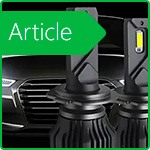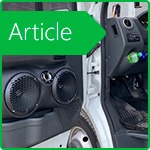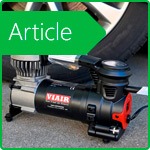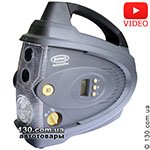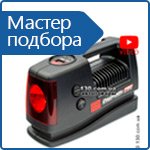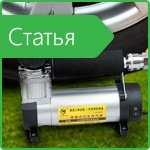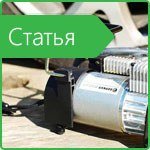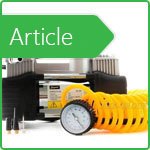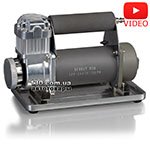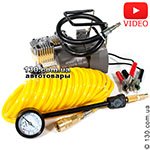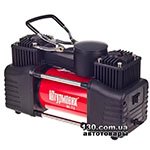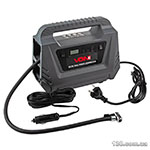Tips for motorists: when to lower and when to pump tires?
Many motorists recall tire pressure a couple of times a year. When an auto mechanic asks them when they are replacing tires at a tire fitting, "How much do you need to pump?" And really, how much? For those who don’t know, the car manufacturer has prepared a hint, there is a special sticker on the gas tank flap or on the body pillar on the driver’s side, there you can see the recommended pressure at any time. Naturally, this is a certain average value corresponding to the size of the wheel and the optimal operating conditions, which must be adhered to, because deviations can cause problems.
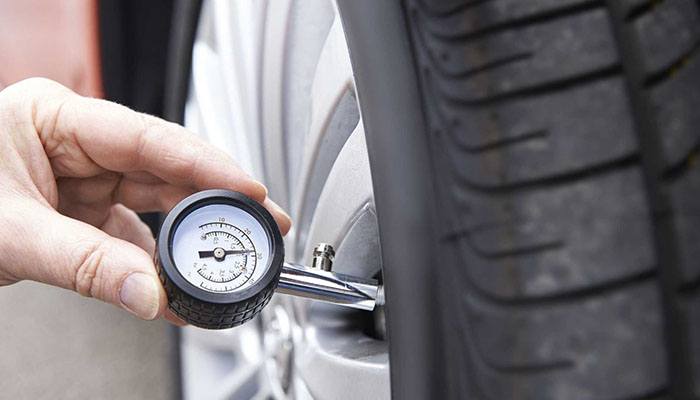
Why is it important to monitor tire pressure?
Despite the fact that there are fans to do their own thing, and not follow the recommendations of automakers (for example, some are still confident that if you pump the tires excessively, you can save gas), but deviations from the norm can be harmful to the car.
So, if the pressure level does not reach the optimum value, this can cause accelerated deformation and heating of the rubber, and also contributes to the fact that the extreme tracks on the tread of the wheel quickly wear out. In some cases, even a violation of the integrity of the frame can be observed. There is an increased risk of damage and breakage of the disc and tire when the wheel enters the pit. Also, do not forget that when riding on tires, which are even slightly, but lowered, fuel consumption increases. Increased pressure leads to the fact that the filament is overstressed, this entails accelerated wear and abrasion of the area in the middle of the tread. It should also be borne in mind that if you drive on tires with high pressure on rough roads, then the suspension and body will be subjected to a lot of stress, which all passengers will feel on themselves. And when the wheel gets into the pit, there is a high probability of a sudden tire break.
However, the most dangerous situation is when a different pressure indicator is observed on all wheels. In this case, the machine will be constantly driven in the direction of the wheel, which has the lowest pressure, this reduces handling. The car may start sideways.
Therefore, it is very important to regularly check tire pressure. It is recommended to do this at least once a month, and in winter even more often. Moreover, do not forget about checking the pressure if you are going on a long journey.
How does temperature affect pressure?
It is reliably confirmed that when the temperature decreases for every 10 degrees of change, the air pressure in the enclosed space changes by about 0.1 bar. Therefore, in the summer you can not worry about a sharp drop in pressure, most often pumping is not required. But as soon as the colder comes in the fall, it is better to check the indicators and use a compressor to return the pressure to normal.

After changing to winter tires in October, during the first frosts, pressure should be checked more often. Experts recommend conducting control measurements when the temperature drops to -10, -15 and then to -20 degrees.
Automatic control
In order not to constantly think that you need to check the pressure and not miss the moment when you need to pump up the wheels, you can use modern electronic systems. For example, you can install a special tire pressure monitoring system. The principle of its operation is very simple-special sensors are placed in each wheel, capable of assessing the level of air pressure inside the tire. Then they, using the radio channel, send information to the on-board computer of the car. As a result, the driver will constantly have up-to-date pressure information, which helps him to respond in a timely manner to any changes in this indicator.
When it is recommended to inflate tires and increase the pressure?
Despite the fact that there is a specific optimal value for tire pressure, sometimes situations arise that require its change. It’s worth increasing the pressure in several cases:
- In the operating instructions that are attached to each car, it is indicated that before going on a long trip, especially along the expressway, it is recommended to slightly inflate the tires at 0.2-0.3 bar. It definitely won’t be worse, so you get a small margin of safety.
- When overloaded. Of course, overloading itself is already a negative phenomenon, sometimes you have to make sacrifices, scoring the car’s interior and trunk literally to the eyeballs. And sometimes a full trailer is added to this load, creating an additional load on the rear wheels. In such a situation, you should slightly increase the pressure by 0.2-0.3 bar, at least in the rear wheels. This will allow the car to move more stable and more confident.
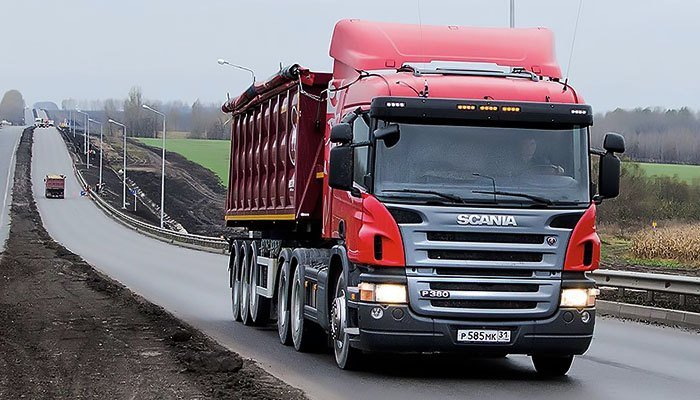
In what situations is it helpful to relieve pressure?
Driving on partially lowered wheels can be dangerous, however, sometimes this is a necessary measure. In particular, it is recommended to relieve tire pressure in the following situations.
Driving in ice
Sometimes there are situations when the driver forgot to change summer tires to winter tires, but you need to go, and there is ice on the road. For example, he was stuck in a country house, and urgently need to return to the city, which means that you need to somehow drive along an icy road. In such a situation, it is recommended to slightly lower the tires, tentatively, to the level of 1.6 Bars. Someone will say that riding on such tires is harmful. Yes it is. But this measure will slightly improve the handling of the car on ice, especially since driving at high speed is unlikely to succeed, as one should not be afraid of overheating of tires. But if the pressure is not reduced, then the risk of an accident on a slippery road will be much higher.
The car is stuck in sand, mud or snow
To provide the average non-all-wheel drive vehicle with increased cross-country ability, for example, when the wheels of a vehicle fall into sand, wet mud or snow, you can just lower the tires a little. Moreover, it is necessary to reduce the pressure in the tires of not only the driving, but also the driven wheels. To remove the machine from such a rework, it is recommended that the tire pressure be reduced to approximately 1.2 Bara. In the most difficult situations, if you are sure that a narrow disc is on the wheel and the tire is quite wide, that is, the probability of self-dismantling is not very large, the pressure can be lowered to the level of 1.0 Bar.
Aligning the machine with a diagonal hanging
Reducing the pressure may be required in order to overcome the diagonal hanging-the case when one wheel on each axle hangs in the air. In this situation, reducing the pressure in the wheels, which are supportive for the machine, will help lower the body slightly. What can give a chance to "hook" on the road surface with hanging wheels. Naturally, if the car is already lying on the bottom, then no reduction in pressure will help, but rather will interfere.
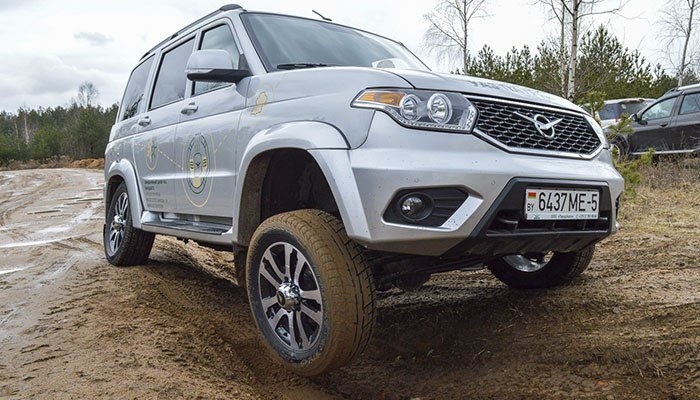
To summarize
As you can see, a lot depends on the level of tire pressure. And it is very important that it is optimal for the specific operating conditions of the machine. Of course, the value recommended by the manufacturer is a kind of compromise. However, this is a reasonable compromise and should be trusted in most situations.
If there are more extreme temperature changes on the street, you should pay more attention to regularly checking the level of tire pressure. In addition, you must definitely not forget about measurements before long trips, on cold wheels.
When driving off-road or on rough roads, you can go for a trick and lower a little tire, this can have a positive effect. Only then, be sure to bring the pressure back to normal. To do this, you need a car pump or compressor. In the online store 130.com.ua you can buy a car compressor in Kiev, Odessa or Kharkov. We have a large selection and a pleasant price for all models!
Related materials
Compressors and pumps: Best Sellers

Stay tuned for updates!
Subscribe to our Telegram channel and be the first to receive useful materials.
Subscribe









